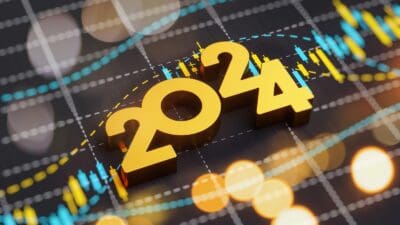The FTSE 100 has hit new all-time highs this year in the face of factors that have heightened downside risk. There’s the Brexit negotiations and elections in some key eurozone countries. There’s the still-unknown quantity of Trump in the US and the equally unknown quantity of the true level of debt and financial stress in China.
We don’t know whether any of these factors will turn out to be toxic for the market but we do know that markets never rise in a straight line and that sooner or later the Footsie will suffer a sharp correction. In such circumstances some sectors and stocks will be hit harder than others.
Beta
Beta is a measure of a stock’s volatility compared with the overall market. The market’s beta is one. Stocks with a higher beta than one will tend to swing more than the market. For example, if the market rises 1%, a stock with a beta of 1.5 will rise 1.5%. This is great in a rising market but in a falling market the same effect applies in reverse.
So, which sectors and stocks are likely to be hardest hit if the FTSE 100 tanks?
High beta
Sectors whose prospects are closely tied to the performance of the wider economy generally have above-average betas.
According to financial data site Digital Look, the three stocks with the highest betas in the FTSE 100 are all housebuilders. Taylor Wimpey (LSE: TW) heads the list with a beta of 2.5, followed by Barratt Developments (2.4) and Persimmon (2.3).
Financial stocks also figure prominently, with Barclays (LSE: BARC) having the highest beta of the banks at 2.1 and insurer Legal & General at the head of other financials with a beta of two. Also with a beta of two, and the highest-ranked stock from outside the housebuilding and financial sectors, is British Airways owner International Consolidated Airlines (LSE: IAG).
Cheap, but …
Taylor Wimpey’s shares slumped as low as 116p in the wake of the EU Referendum when fears that the UK could head into a recession were rife. However, forecasts for economic growth have remained fairly robust and the housebuilder’s shares have recovered a whopping 63% to 189p, not far below their pre-referendum high of 210p.
The stock still looks cheap on a trailing P/E of 10.4, with a 5.8% dividend yield, but this is a stock I would look to buy around the bottom of a housing cycle or during a major market correction, as we saw after the EU Referendum.
Just too cheap
International Consolidated Airlines trades on a remarkably low trailing P/E of 6.8 at a share price of 546p. The company has steadily increased its operating margin over the last few years and looks in good shape. The group faces a challenging environment, including weak sterling having an adverse impact on earnings and a glut of new capacity in the industry pushing down fares, but a P/E of 6.8 just looks too cheap to me.
Wide margin of safety
Barclays trades on a relatively high trailing P/E — 17.6 at a share price of 227p — but, as the benefits of restructuring come through this year, the P/E is forecast to fall to 11.5. As the P/E-to-earnings growth ratio is 0.2 and the shares trade at a 22% discount to tangible net asset value, there appears to be a wide margin of safety here, making the shares attractive to my eye.







